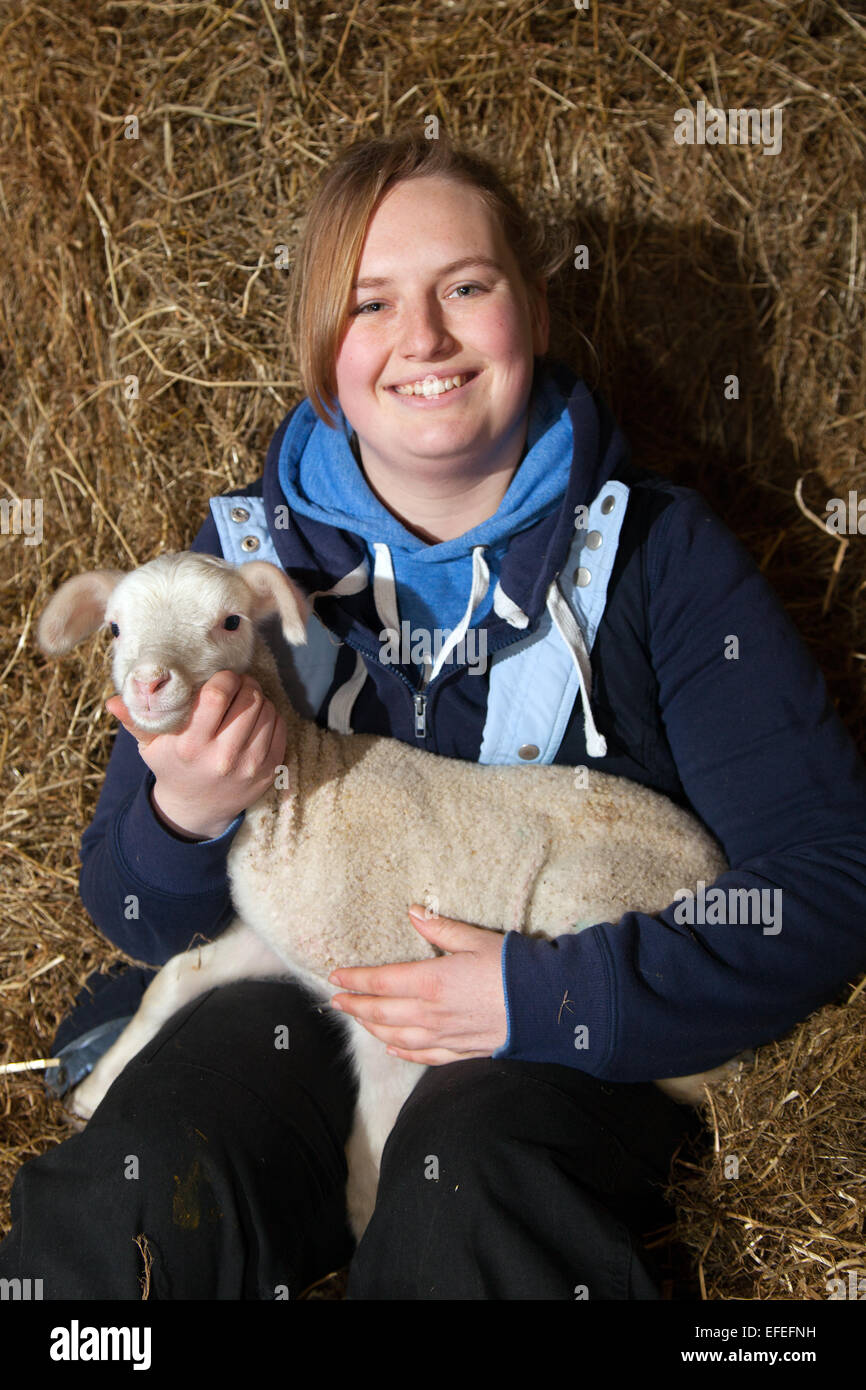Blackpool, Lancashire, UK. 2nd February, 2015. Abi Harris, 18 with a two day old, BritishMilk winter born lamb, orphan at Parr’s Farm. The new born lambs at Farmer Parr’s Animal World are christened Keith and Colin. They were adopted from a local sheep farmer who had 2 orphan lambs, a just-born triplet that required bottle feeding. The farm park in Fleetwood sometimes takes in ‘pet’ lambs at this time of year so that visiting children can help to feed them. Credit: Mar Photographics/Alamy Live News

Image details
Contributor:
Mar Photographics / Alamy Stock PhotoImage ID:
EFEFNHFile size:
24.7 MB (1.1 MB Compressed download)Releases:
Model - yes | Property - noDo I need a release?Dimensions:
2400 x 3600 px | 20.3 x 30.5 cm | 8 x 12 inches | 300dpiDate taken:
2 February 2015Location:
Blackpool, Lancashire, UK.More information:
This image could have imperfections as it’s either historical or reportage.
New born lambs at Farmer Parr’s Animal World (near Blackpool) are christened Keith and Colin having been adopted from a local sheep farmer who had 2 orphan lambs that required bottle feeding. The farm park in Fleetwood sometimes take in ‘pet’ lambs at this time of year so that visiting children can help to feed them. In no time the lambs will be galloping through to the front of the ‘Animal Show’ so that children can experience lamb feeding. The British Milksheep originally was known as the Alderbred and is a breed of domesticated sheep developed by Lawrence Alderson in Wiltshire and Northumberland. It was exported to several countries including Hungary, France and Greece, and from there other neighbouring countries. It now can be found mainly in the UK, Hungary and Canada, although the population in Britain was decimated during the outbreak of foot-and-mouth disease in 2001. The exact composition of the breed has never been declared but it was based on high-performance animals in existing flocks of Dorset Horn, Bluefaced Leicester and Eastrip Prolific sheep kept by the Alderson family. Additional individual animals were selected from Lleyn, Texel and East Friesian breeds. Subsequent selection was based on measures of productivity, without regard for uniformity of appearance. A standardised breed type emerged gradually as the blending process continued. The animals were exposed to rugged conditions in the upper Pennines in northern England to develop robustness and adaptability. Progeny testing from the initial stages laid the foundation for continuous genetic improvement. Initially, total ownership of females of the breed was retained by the family and only rams were sold, but groups of females were released to other breeders in 1981. Numbers of flocks and animals increased rapidly and there were more than 5, 000 breeding ewes by the mid-1980s with flocks widespread in Britain.